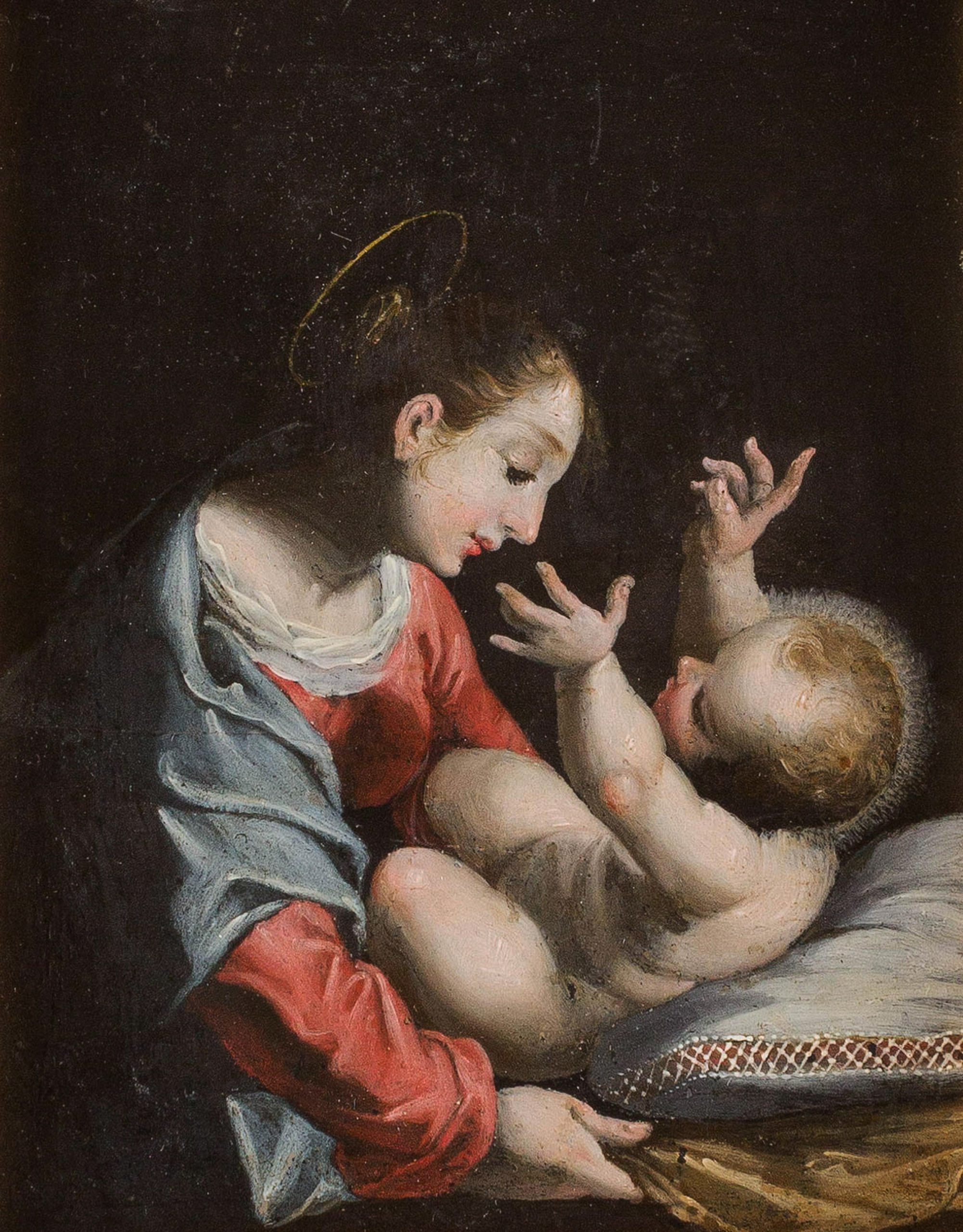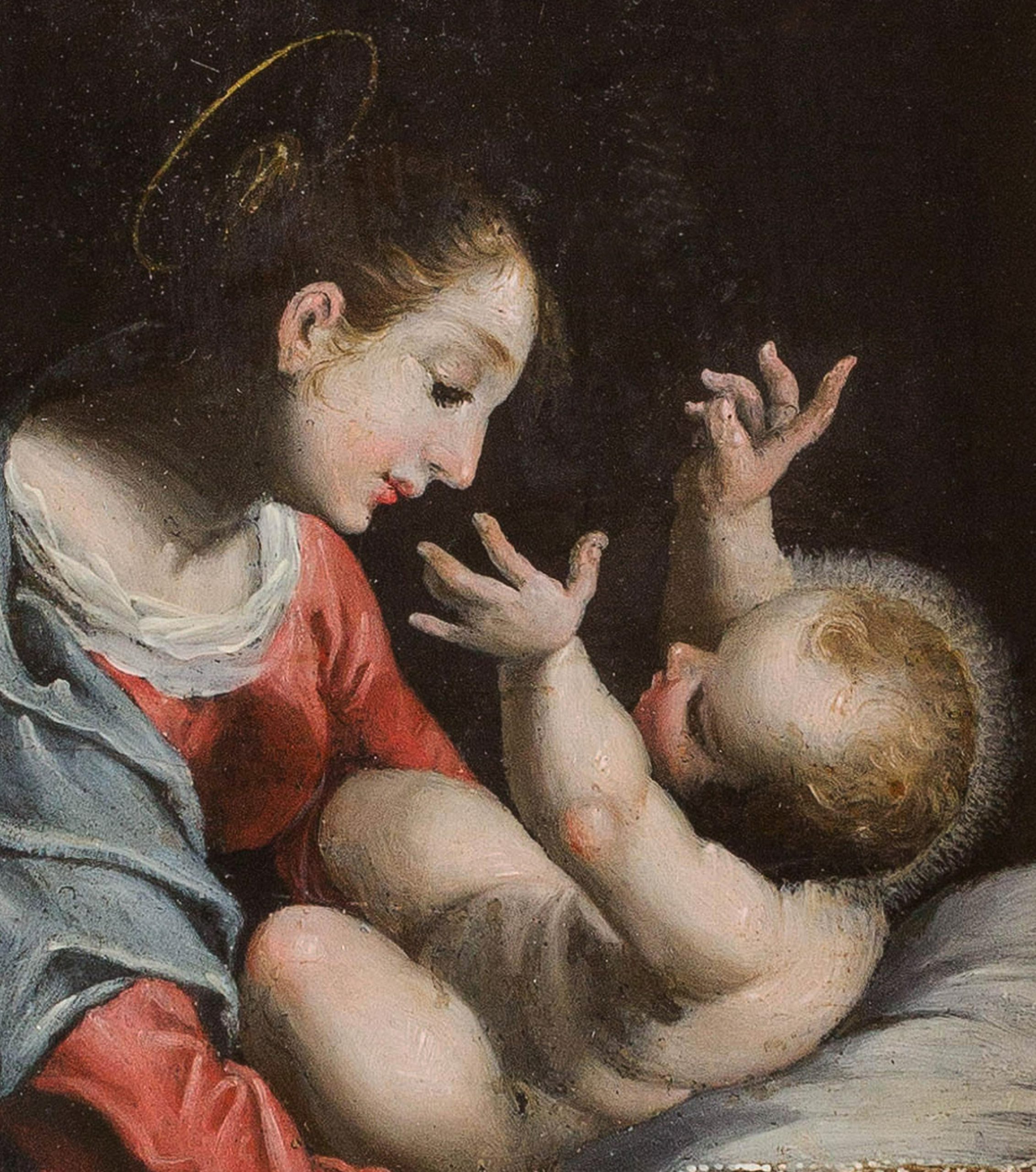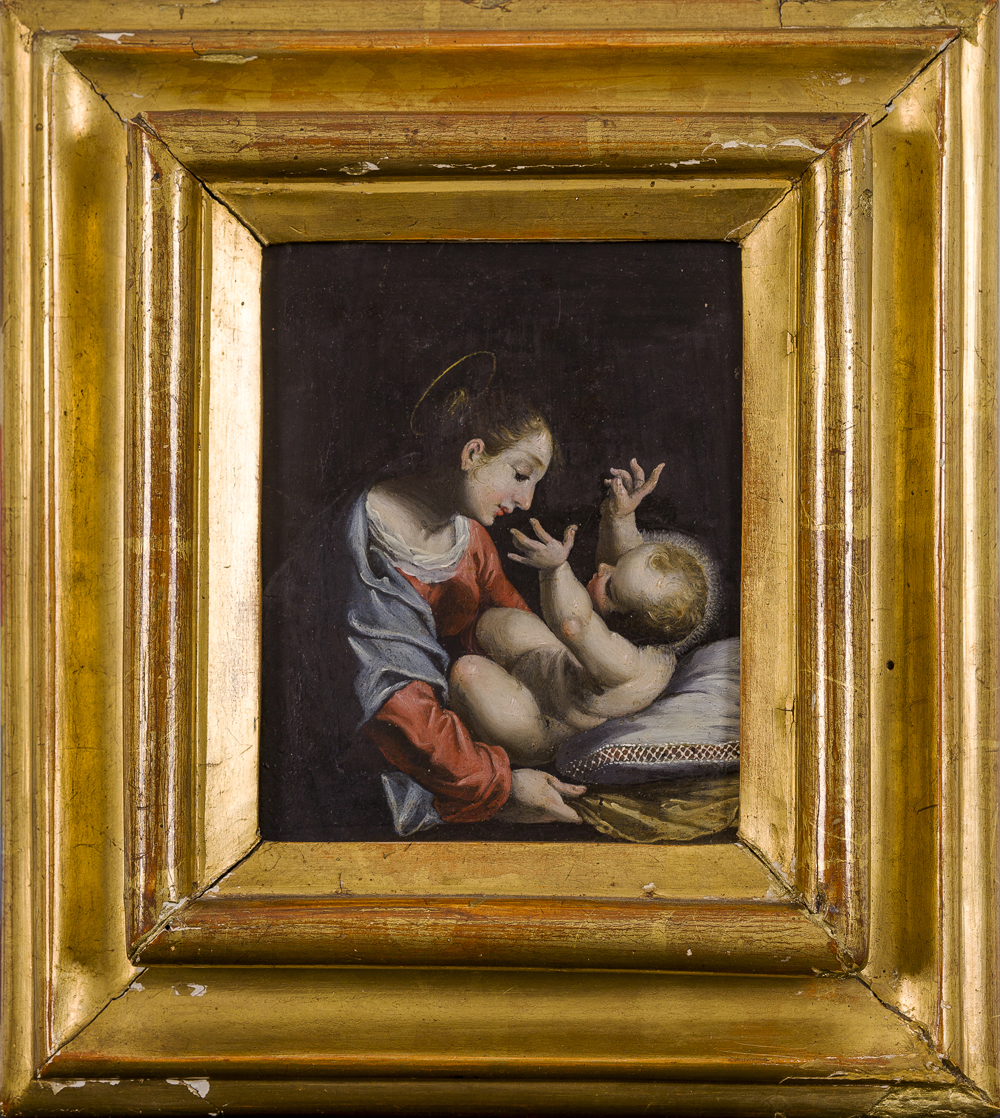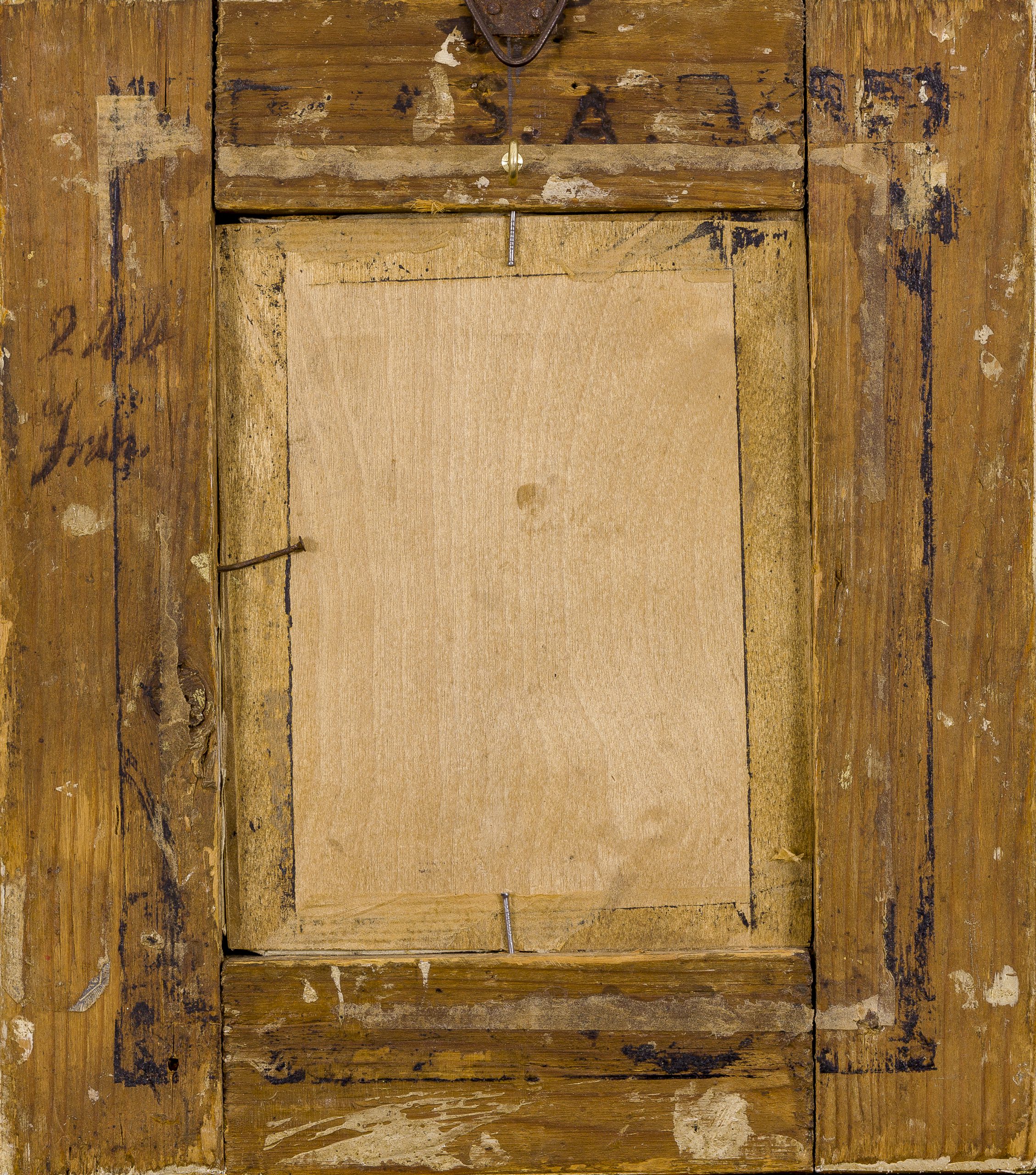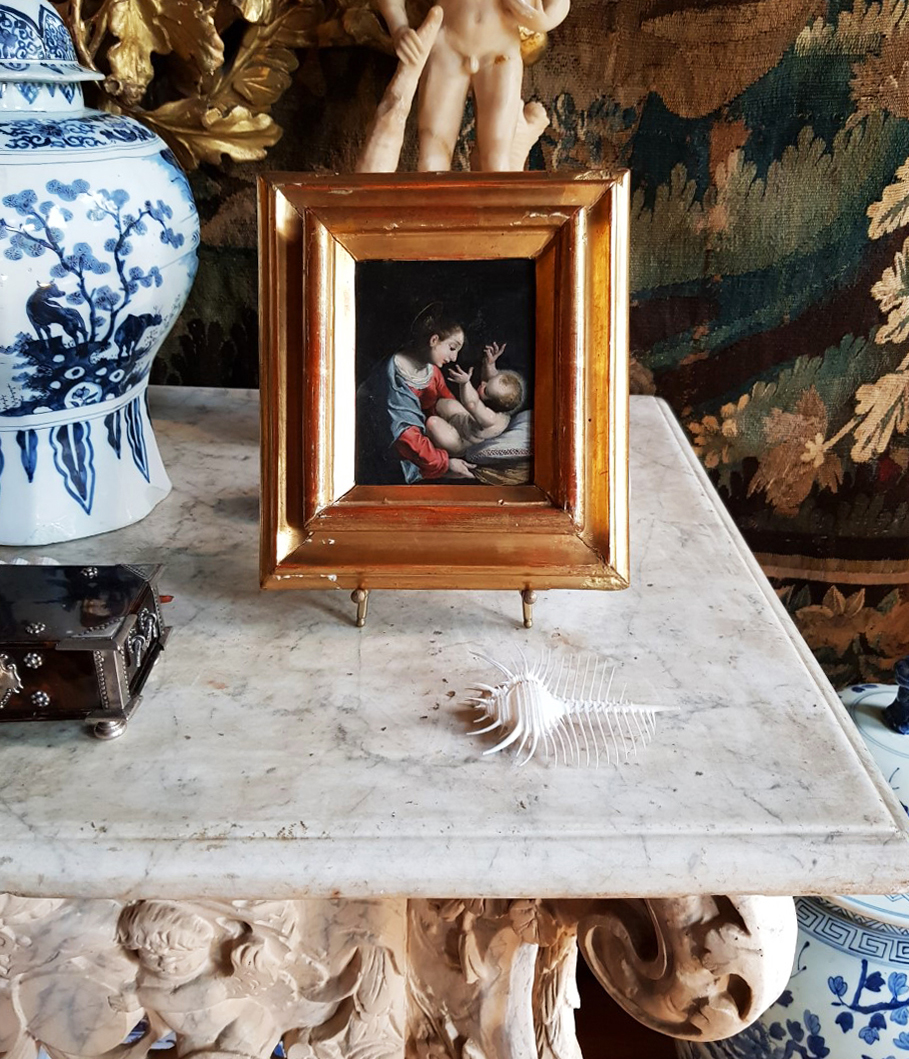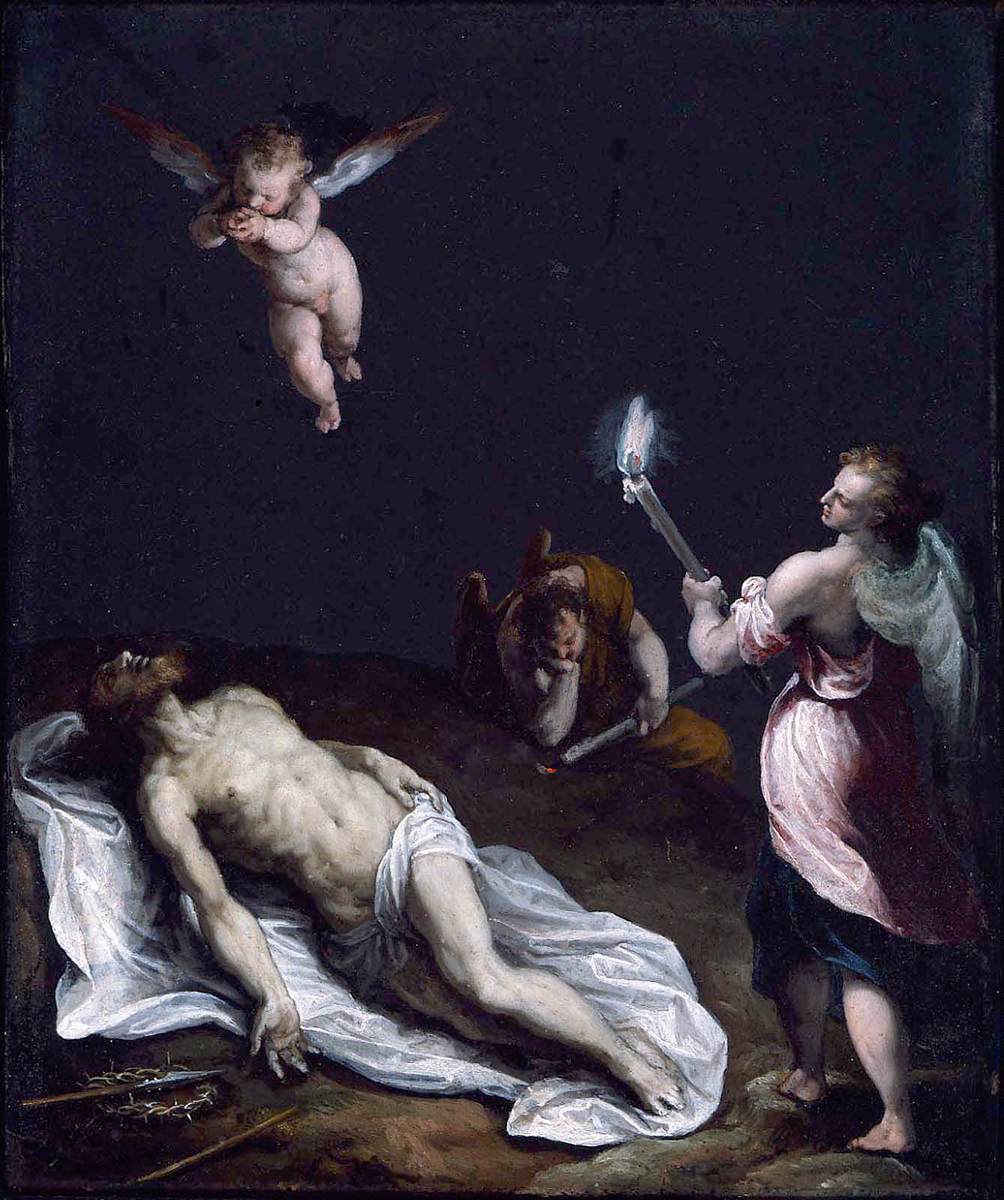ITALIAN SCHOOL, 17th CENTURY
Italian School, 17th century
The Madonna and Child
Oil on slate, 15.5 x 12.3 cm (6.1 x 4.8 inch); framed in a gilt early frame
Provenance
Private collection, Germany
***
The affectionate relationship between Mary and the Christ Child which can be observed in the present charming and intimate painting is typical for works of the Italian Counter Reformation, when the Catholic Church urged artists to produce artworks that would inspire its followers. The Virgin became increasingly popular, especially when depicted as mother, as in this instance.
Small paintings were usually executed on panel or copper supports, but this work is painted on slate, dark grey in colouring, which acts as the background of the scene. The technique of painting on slate was perfected by Sebastiano del Piombo (c.1485–1547) in the beginning of the sixteenth century and was particularly favoured by Veronese artists, such as Pasquale Ottino (1578–1630), Alessandro Turchi (1578–1649) and Felice Brusasorci (c.1539–1605).1 As an example of a work on slate by Brusasorci, his Dead Christ Mourned by Angels in the Museum of Fine Arts in Boston can be cited (fig.).2
The technique was especially alive during the early decades of the seventeenth century – our painting would appear to date from this very period, and although its attribution remains elusive, it may well have been painted by an artist from Verona.
SOLD
1. See the forthcoming exh. cat. by Judith W. Mann (ed.), Paintings on stone: science and the sacred 1530-1800, Missouri (Saint Louis Art Museum) 2020-21.
2. Oil on slate, 33 x 27 cm; A. Brundin, The sacred home in Renaissance Italy, Oxford 2018, fig. 6.12.
